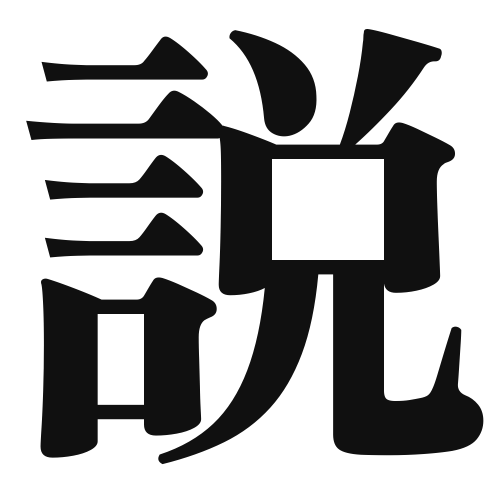1. Overview of Meaning
The kanji “説” (setsu) primarily means “to explain” or “to discuss.” It is often used in contexts where clarification or interpretation is needed.
2. Origin and Radical
Formation of the Kanji: The kanji “説” is a phonetic-ideographic character (形声文字). It combines the element for “speech” (言) with a phonetic component that suggests its pronunciation.
Radical: The radical of “説” is 言 (gen), which relates to speech or words, indicating its connection to communication.
3. Examples of Usage
Common Words and Phrases: Some frequently used words that include “説” are:
- 説明 (setsumei) – explanation
- 説得 (settoku) – persuasion
- 仮説 (kasetsu) – hypothesis
Example Sentences in Daily Conversation:
- この問題について説明してください。 (Kono mondai ni tsuite setsumei shite kudasai.) – Please explain this issue.
- 彼は私を説得しようとした。 (Kare wa watashi o settoku shiyou to shita.) – He tried to persuade me.
4. Synonyms and Antonyms
Similar Kanji: A kanji with a similar meaning is “解” (kai), which means “to solve” or “to understand.” While both involve clarification, “解” focuses more on solving problems, whereas “説” emphasizes explanation.
Opposite Kanji: An antonym is “無” (mu), meaning “nothing” or “absence,” which contrasts with the act of explaining or providing information.
5. Cultural and Historical Background
Connection to Japanese Culture: The concept of “説” is deeply embedded in Japanese culture, where communication and understanding are highly valued. It plays a significant role in education and interpersonal relationships.
Proverbs and Idioms: One common saying is “説得力がある” (settoku-ryoku ga aru), meaning “to have persuasive power,” highlighting the importance of effective communication in Japanese society.
